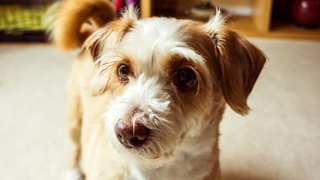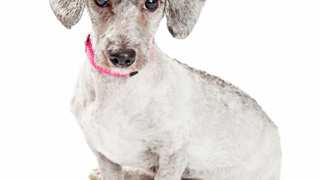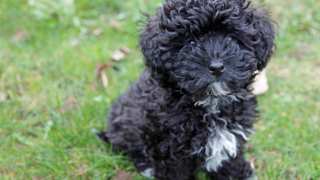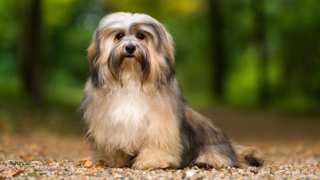Since this hybrid can have a variety of coat lengths, a majority of proper Dorkie haircuts are only possible with dogs with longer-haired coats. While each Dorkie may be different, those with short hair simply don't have coats long enough to be cut into an actual style. That said, it might be a good idea to take your Dorkie, regardless of its coat length, to a professional groomer at least once to see what cutting and styling possibilities exist. The groomer can advise you on haircuts and provide other grooming tips in general.
For owners with Dorkies whose coats resemble the Yorkshire Terrier or the longhaired Dachshund, numerous hairstyles are possible. A few popular ones:
- Puppy Cut: This style makes your Dorkie's coat pretty "low-maintenance," as the shorter hair won't mat or tangle as much. A Puppy Cut sees the entire coat clipped to 1-2 inches; some owners prefer to leave the facial hair (if the dog has any) a bit longer. Can be done at home with a little practice.
- Schnauzer Cut: As its name suggests, this cut makes a Dorkie resemble a little Schnauzer. The body hair is clipped short, but the leg hair is left longer and is styled into a "reverse taper"; the facial furnishings are left longer, with a pronounced beard like that of a Schnauzer. Probably best done by a professional groomer.
- Teddy Bear Cut: Some say this cut is exactly the same as a Puppy Cut, but technically it's not. Like the Puppy Cut, the Teddy Bear Cut sees the coat clipped pretty short, but in this style the legs (and facial hair, if any) are left a bit longer, and carefully rounded and sculpted to make the dog resemble a stuffed animal. Can be done at home, but will definitely take some practice!
- 3-Layer: Also called the 3-Stack, this artistic style is only possible with Dorkies with very long hair like their Yorkie parents' coats. This style sees the facial and ear hair cut to a line just below the shoulders; the body hair is cut to a line about two inches from the ground; and the leg hair is cut to a line less than an inch from the ground. The overall look creates three distinct "levels," or layers. This cut is very difficult, and will definitely require a groomer's expertise.




